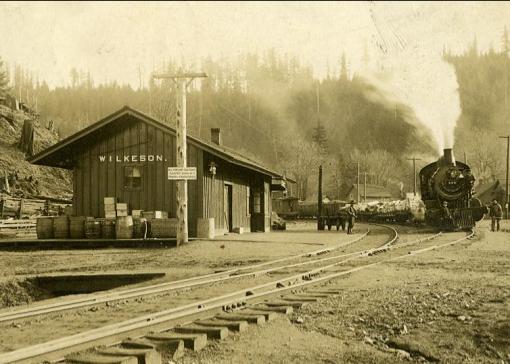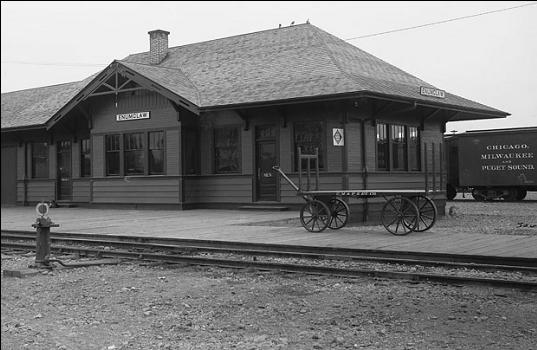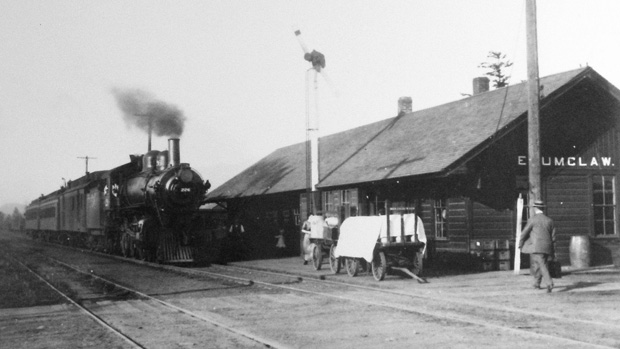Railroads in Enumclaw

In Enumclaw's early days, two rail lines each brought transcontinental passenger and freight trains into town, stopping at their respective depots.Today, few traces of the railroad remain around Enumclaw, but the town owes its existence to the railroad.
The Northern Pacific Railroad, in choosing it as a site for a critical siding, enabled the tiny settlement to become the economic and population center of the Plateau between the White and Green rivers.
In the 1860s, the Northern Pacific was given title to every other section for a transcontinental rail route, on the condition that they completed the line. Tacoma was chosen for the original terminus, with a crossing of the Cascades through a tunnel under Stampede Pass.

The discovery of coal in the 1870s in the Wilkeson area provided incentive for the Northern Pacific to first build a line from Tacoma.over there. By 1880, they began surveying their transcontinental route, and selected the upper White River Valley by 1883.
Also in 1888, Enumclaw got its own Northern Pacific depot, which remained in place until 1963. The current library now occupies this site.
In 1910, the Chicago Milwaukee railroad came to town with its own depot and transcontintental route. Though service was later dicontinued, the depot remained until 1976(?), replaced by the True Value Hardware building.
Rail service came to an end in Enumclaw in 1956, but use of the trestle continued for freight passing through for two more decades. The trestle was finally torn down in 1987.
Railroads were responsible for Enumclaw's birth and growth by connecting its people and products to the outside world. But rails were also used within the mining and logging industries to get those products out of the ground and out of the woods.
Mining and Logging Railroads in the Area
Crews were building the trestle, and the first train passed over it in 1886, even though it was not yet complete. It was done a year later, and the first transcontinental train passed through Enumclaw and over the trestle in 1888.





Railcars were used to get coal out of the mines, like this one at Franklin. Incline mines used cables and winches to move the cars, while those in level mines were pulled by men, donkeys, or electric engines. Hoppers in Black Diamond were used to transfer the coal to the trains.


"The tracks reached there (what was later to become Enumclaw) on July 22, 1885, and the place was selected as a location for a siding and a section house." Northern Pacific Railroad Office of Engineer. Women's Progressive Club, 1941.


Temporary rail lines were laid deep into the forests in the early days. Trains were the easiest way to bring out the huge virgin timber before the days of log trucks.

Speeders transported crews out to the logging camps.

Trains could also get huge pieces of equipment out into the forest.
Since the lines weren't meant to be permanent, the logging railroads weren't engineered to the same standards as the regular freight and passenger lines.

For many years, White River Lumber Company's network of railroads were not linked to any other tracks than their own. To get their first engine up to the mill above Enumclaw, they brought it to town on the Northern Pacific tracks. They then laid about 50 feet of temorary ties and track, replacing what was behind the engine to the front, and repeating the process until it covered the three miles to the mill. It took six days.

